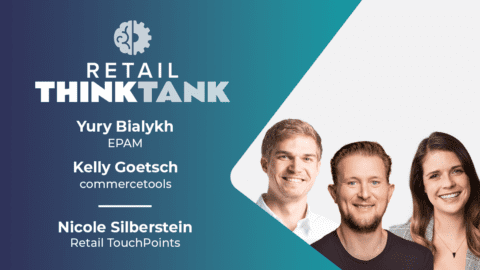Editor’s Note: Be sure to check out Part 2 of this series focusing on evolving consumer perceptions of the metaverse.
The metaverse is a new frontier for retail, but retailers can still look to past trends to help them get a handle on how it will grow and who the early adopters are likely to be. More than two-thirds of shoppers overall are already familiar with the metaverse, but the percentages for each generation vary widely, according to KPMG’s Go boldly, not blindly, into the metaverse Consumer Pulse Survey.
Retailers should leverage this knowledge and use it as a guiding light to enter the metaverse sooner rather than later. The market could reach $783.3 billion in 2024, up from $478.7 billion in 2020, at a compound annual growth rate of 13%, according to data from Bloomberg. Retailers looking to grab a piece of this pie should keep the following strategies in mind:
- Look for young shoppers to lead adoption: The earliest metaverse adopters tend to be young, male and wealthier than average, so keep these demographics in mind as you determine your initial strategy for entering the metaverse;
- Prepare for new personalization challenges: Personalization is just as important in the metaverse as in any other channel, perhaps even more so, and shoppers interested in the metaverse are going to expect retailers to fully use the technology’s capabilities when delivering unique experiences;
- Let social media learnings guide the way: The metaverse is ultimately an evolution of existing social media channels, so many of the strategies that applied to the adoption and growth of those platforms will still apply — though they will take on new dimensions.
Early Adopters Will Demand Early Innovations
While a majority of all shoppers are familiar with the metaverse, certain demographics are more likely than others to know about Web3 technology. The patterns reflect early adoption of other technologies, with younger, wealthier consumers ahead of the curve. Overall, KPMG’s survey found:
Advertisement
- 71% of males are familiar with the metaverse, compared to 59% of females;
- 86% of Gen Z, 81% of millennials, 68% of Gen X and 42% of Baby Boomers are familiar with the metaverse; and
- 76% of people with income from $100,000 to $199,000 are familiar with the metaverse, compared to 60% among those who have annual incomes below $50,000.
Recognizing the similarities with earlier adoption patterns for tech like smartphones and social commerce can help retailers design their initial metaverse offerings. These eager users are going to be the trendsetters that set expectations for wider acceptance of metaverse commerce. Think about why younger shoppers liked these tools, add in what appeals to them in other channels today, and use this information to inform your initial metaverse adoption strategy.
“There’s a parallel we see as adoption increases,” said Matt Kramer, National Sector Leader, Consumer and Retail for KPMG U.S. in an interview with Retail TouchPoints. “Those younger generations are very eager and willing to spend their money digitally through online platforms and social media. There’s not really a barrier there or any concern. We do think there’s certainly data security risks that need to be carefully monitored, but there’s no significant hesitancy [on their part].”
However, new channels also mean new expectations. The metaverse holds the potential for retailers to meet their shoppers in fresh and exciting ways, and early adopters in particular are going to expect truly standout experiences from their favorite retailers.
“You better be prepared to be innovative and creative, because that group expects you to have variety,” said Kramer. “They expect you to be able to meet their customer behaviors in unique ways, so you better know your customer, particularly at that age demographic, and not make it a one-size-fits-all experience. What is your new brand strategy for that cohort of customers in the metaverse? It may not be the same as your overall brand strategy that you’re executing in-store and online.”
Personalization Remains Important, but Data Collection has Changed
Shoppers already have high hopes for the potential of the metaverse. KPMG found that 46% of those surveyed agree that “the metaverse can provide a forum to interact with friends in a way that is as meaningful as in person.” While this is a sign that the metaverse can bring customer-retailer relationships to a whole new level, it also means that expectations are already sky-high.
“If you’re able, as an organization, to properly knit together the ways that your customers want to interact with you, it impresses those customers,” said Kramer. “They expect you to know when they’re engaging with you in a store, online, mobile or in the metaverse. They expect that you’re going to track them and understand the way they are traveling around in your brand, and they want to be appreciated as a customer. That’s going to be the test for companies. Are you effectively tracking how your customers are navigating the metaverse? Customers don’t want to be treated as one size fits all.”
That said, maintaining high levels of personalization is easier said than done in Web3. Web 2.0 sites are walled gardens where retailers have access to plenty of their own data and can easily track shoppers’ habits in their own ecosystems, but the decentralized nature of the metaverse means companies need to rethink how they understand their customers. This is yet another reason to get involved early — shoppers may be forgiving of early missteps, but once broader adoption sets in you need to be an expert in where and how you can personalize experiences.
“You’re going to have to pick and choose your battles as to what Web3 or metaverse communities you want to really lean into,” said Kramer. “Then you’re going to have to be engaging, either yourself or through your influencers, in those decentralized communities to be able to collect the information. In a decentralized forum you don’t necessarily own the data. You’re not going to get it in real time like you currently expect to, so you’re going to have to be engaged in the experience with your customers in order to see what’s happening.”
Social Media Creates a Blueprint for Future Innovation
While the metaverse’s unfamiliarity can be intimidating, retailers can take comfort in knowing that many social media habits will carry over to this new space. KPMG found that 60% of consumers are comfortable clicking through virtual advertisements either sometimes or all the time, and Kramer expects this habit to transfer into metaverse shopping habits. Additionally, 49% of those surveyed make purchases based on advertising and recommendations on social media, which also is expected to be reflected in metaverse interactions.
The nature of Web3 compared to Web 2.0 means these habits won’t be one-to-one translations, but social media habits can still serve as a valuable jumping-off point. Retailers can take shoppers’ social media habits as baseline demands and use them to see just what needs to be changed to evolve these strategies for the metaverse.
However, turning social media insights into metaverse success is its own skillset, and it’s one that few retailers already have. Getting a proper head start in the metaverse means gaining access to the talent that can position you for success — whether you look internally by building out a team or externally through expert partners.
“You need to continue to bring new skills into your organization in order to really understand this world,” said Kramer. “People with this type of background and experience are in high demand and can be snatched up in a heartbeat. Are you continuing to build the capabilities in your organization? Or are you outsourcing to purchase those capabilities so that you have the right people studying the customer behaviors and being responsive to that?”
















